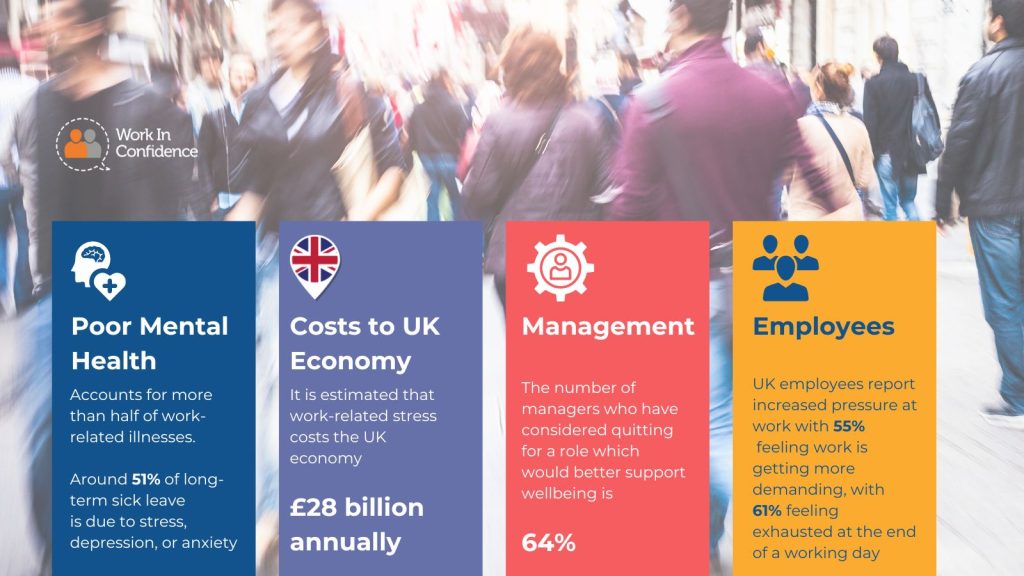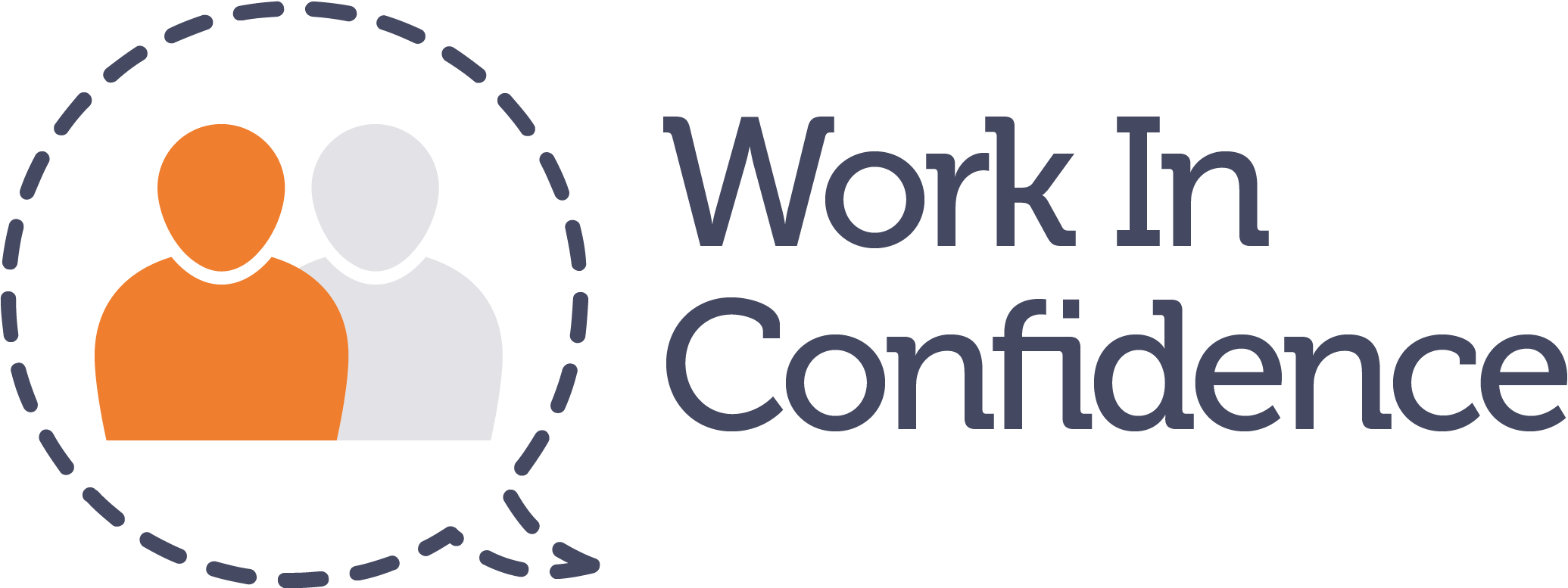
The scale of the problem
- Mental health challenges account for over half of work-related illnesses. An estimated 51% of long-term sickness absence relates to stress, depression, or anxiety.
- UK Employees report significantly increased pressure at work with 55% feeling work is getting more demanding and 61% feeling exhausted at the end of most working days.
- Deloitte recently noted that 64% of managers have considered quitting for a role which would better support wellbeing.
- 70% of managers feel that organisational barriers come in the way of supporting staff wellbeing.
The cost to your organisation
This all has a massive cost for organisations – both the public sector, the third sector and private businesses, as well as being devastating for your people.
It is estimated that work-related stress costs the UK economy £28 billion annually. That’s around £900 per employee. To put that in context, if you have 100 employees; that’s nearly £100,000. Notch that up to 1,000 employees and you are looking at £1 million.
How much time and energy do you spend understanding your people in this area?
The knock-on effects to organisations
As well as the devastating personal effects, the knock-on effects for the organisation include:
- Diminished in work performance.
- Decreased engagements.
- Increased attrition rates (leaving!).
- Increased absence.
- Problems with hiring.
- General costs of dealing with problems.
The causes of the problem
Post COVID, the exact balance of contributions to the problem are not yet clear (and without better research probably never will be).
However contributory factors may include:
- Long COVID.
- Increased workload.
- Poor work practices.
- Economic and social pressures.
- More limited access to healthcare than maybe desirable.
Actionable recommendations
Businesses and other organisations do not have a magic bullet to resolve everything. They do, however, have plenty of opportunities to substantially improve their current situation.
What can you do?
Understand your people and the extent of the problem.
- How many of your people are suffering from mental and physical health problems?
- Do your people feel that their workload is manageable?
- Do your people feel that in carrying out their work they have the correct resources and support?
- Does your organisation do all it can do support staff with families or carer responsibilities?
- What can be done to improve work practices for your people?
- Is your organisation free of harassment and bullying?
A few things to take into account:
There is a lot of evidence to suggest that bullying and harassment markedly increases stress, illness and a decrease in performance. There is also a lot of evidence to suggest that it is all too prevalent in the UK workplaces.
For many people, a good degree of flexibility in their work practices helps here. This particularly includes where they work from and amount of hours worked.
There is also often a knee-jerk reaction ‘we should get back to the office’. My advice would be to do your research and go on the evidence. Is flexible working more effective? What degree of flexibility is good for the organisation and its people?
- Those people who do wellness challenges are more likely to perform better and be more engaged where the organisation has sought to make all reasonable accommodations to help them.
- Understanding your people is key, however, gaining understanding has to be carried out in a sensitive way. Bear in mind that many people may be reticent to discuss problems openly, often through fear of the impact this may have on them and their career.
Employee engagement solutions to help you understand your people
If you are looking at ways to understand your people better, there are various approaches I would recommend. Given the sensitivities, many people have around speaking up, an anonymous two-way communication channel is a good place to start.
Regular staff surveys are also a great way to engage and receive feedback around specific topics, or areas of the organisation. These can be a comprehensive deep-dive into wellness, respect or workplace practices with a long-form survey. Pulse surveys are a great way to gauge a topic such as mental health.
If you are interested in learning more, please reach out as I would be happy to have a discussion with you.
Why not book in a demonstration of our anonymous two-way reporting and see how quick and easy our surveys are to create and complete – together with HR case management reporting, you will see how these all integrate giving you real-time dashboard and reporting data, great insights and an overall picture of the health of your organisation.
The WorkInConfidence online platform is cloud-based and easy to use on PC, phone or tablet. We are quick and easy to get started with, trusted by your people, insightful for your management and proven by our extensive user base.
WorkInConfidence joins up trusted employee voice with management insights into the state of your organisation so you can learn, develop and thrive, no matter your size.
